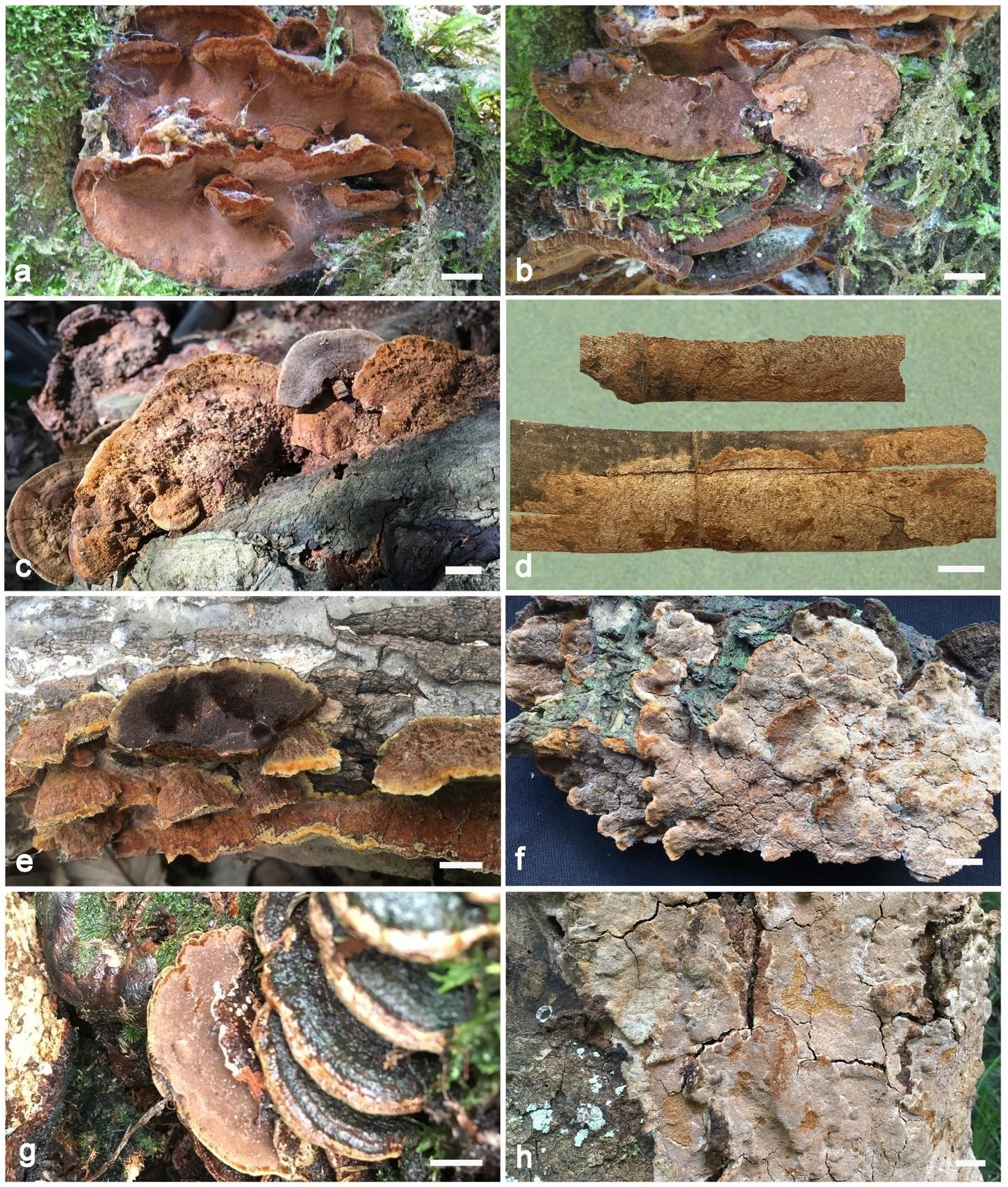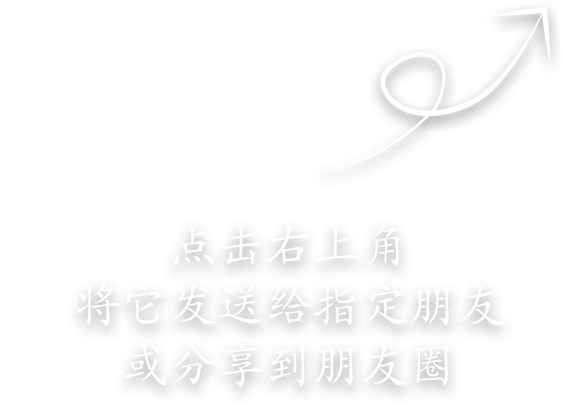Fuscoporia chinensis Q. Chen, F. Wu & Y.C. Dai 2020
MycoBank MB 833956; Facesoffungi number: FoF 07998.
Holotype: China, Yunnan Province, Binchuan County, Jizushan Park, on fallen angiosperm branch, 30 Aug 2015, Y.C. Dai 15713 (BJFC 019817).
Morphological description
Basidiocarps – Annual, effused-reflexed to pileate, broadly attached, imbricate, without odor or taste and corky when fresh. Pilei dimidiate or conchate, often laterally fused, projecting up to 2 cm long, 5 cm wide and 5 mm thick at the base. Pilear surface yellowish brown to dark reddish, indistinctly concentrically sulcate, velutinate to rugose with age; margin obtuse, yellowish brown. Pore surface grayish brown to dark reddish brown, glancing; margin distinct, yellowish, paler than pore surface, up to 2 mm wide; pores circular to angular, 7–8 per mm; dissepiments thin, slightly lacerate, abundant setae seen in tube cavities (under anatomical lens). Context yellowish brown, corky, up to 2 mm thick. Tubes yellowish brown, paler than context, corky, up to 3 mm long.
Hyphal structure – Hyphal system dimitic; generative hyphae simple septate; tissue darkening but otherwise unchanged in KOH.
Context – Generative hyphae rare, hyaline, thin-walled, occasionally branched and simple septate, 2.5–4 μm in diam.; skeletal hyphae dominant, yellowish brown, thick-walled with a wide lumen, unbranched, aseptate, interwoven, 3.5–5 μm in diam.
Tubes – Generative hyphae common, hyaline, thin-walled, frequently simple septate, occasionally branched, 2–4 μm in diam., some of them encrusted at dissepiment edges; skeletal hyphae dominant, yellowish brown, thick-walled with a wide lumen, unbranched, aseptate, straight, subparallel along the tubes, 3–4.5 μm in diam. Hymenial setae mostly originating from tramal hyphae, subulate, frequently septate, dark brown, thick-walled, 20–40 × 4–8 μm; fusoid cystidioles frequent, hyaline, thin-walled, sometimes covered with crystals, 14–20 × 4–6 μm; basidia short clavate to barrel-shaped, with four sterigmata and a simple septum at the base, 10–14 × 4–6 μm; basidioles in shape similar to basidia, but slightly smaller.
Spores – Basidiospores ellipsoid, hyaline, thin-walled, smooth, sometimes bearing a small guttule, IKI–, CB–, (2.9–)3–4(–4.3) × (1.8–)2–2.5(–2.8) μm, L = 3.55 μm, W = 2.26 μm, Q = 1.42– 1.65 (n = 90/3).
Habitat: on fallen angiosperm branch.
Distribution:China.
GenBank Accession: ITS: MN816721*; nLSU: MN810008*;RPB2:MN848771*;TEF1
:MN848846*
Notes:Fuscoporia chinensis is a common species in China. Morphologically, it is characterized by annual, effused-reflexed to pileate basidiocarps with indistinctly concentrically sulcate, velutinate to radially rugose pilear surface, small pores (7–8 per mm), septate hymenial setae, and small, ellipsoid basidiospores measuring 3–4 × 2–2.5 μm. Almost all specimens of F. chinensis were previously identified as F. gilva (Dai 1999, 2010, Chen & Dai 2019, Chen et al. 2019), and now they are confirmed as different species and segregated from F. gilva, which has septate skeletal hyphae and larger basidiospores (4–5 × 3–3.5 μm, Gilbertson 1979). Fuscoporia chinensis is closely related to F. plumeriae sp. nov. and F. formosana, but F. plumeriae has smaller pores (8–10 per mm), aseptate hymenial setae, septate skeletal hyphae; F. formosana is distinguished from F. chinensis by larger pores (3–5 per mm, Chang & Chou 1998).
Reference: Chen Q, Du P, Vlasák J et al. 2020 – Global diversity and phylogeny of
Fuscoporia (Hymenochaetales, Basidiomycota). Mycosphere 11(1), 1477–1513, Doi 10.5943/mycosphere/11/1/10 
Basidiocarps of Fuscoporia species. a–b Fuscoporia australasica (paratype, Dai 15625). c Fuscoporia australiana (holotype, Dai 18879). d Fuscoporia bambusae (holotype, Dai 16599). e–f Fuscoporia chinensis (e paratype, Dai 17282, f paratype, Dai 17583). g Fuscoporia eucalypti (paratype, Dai 18642A). h Fuscoporia karsteniana (paratype, Dai 17925). Scale Bars = 10 mm.









